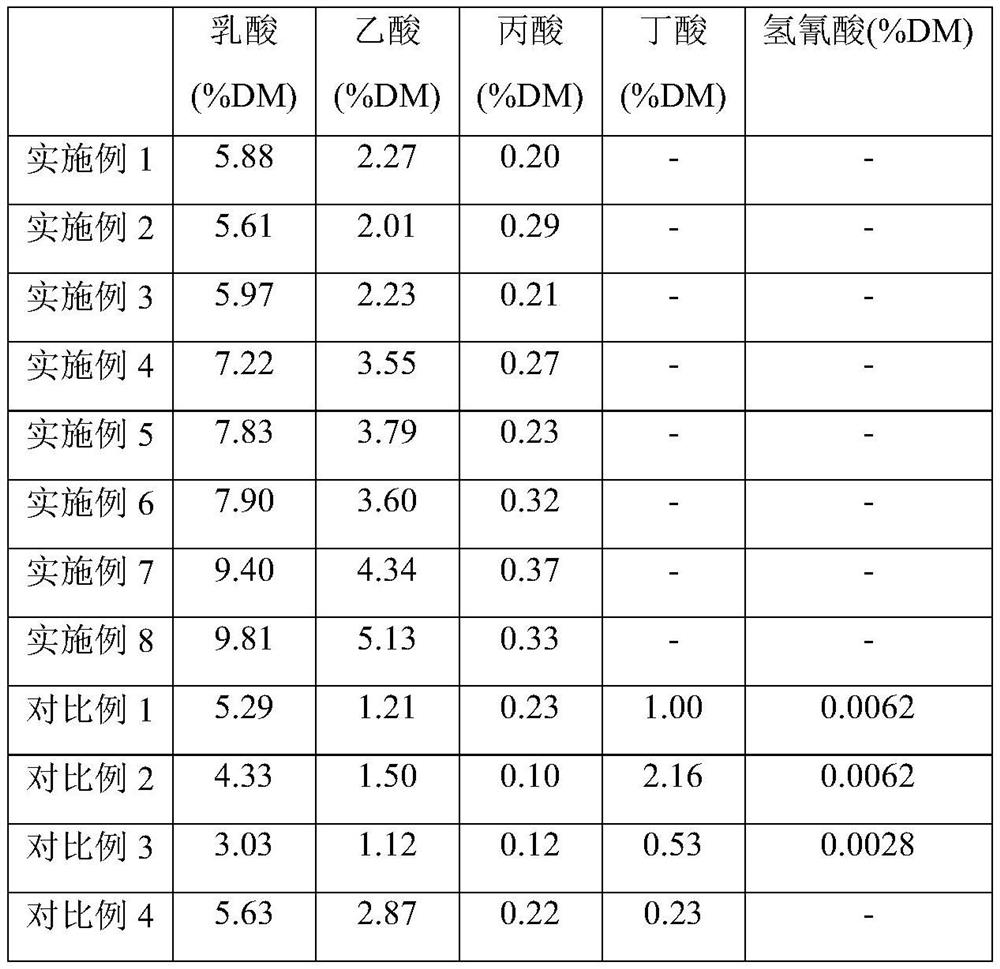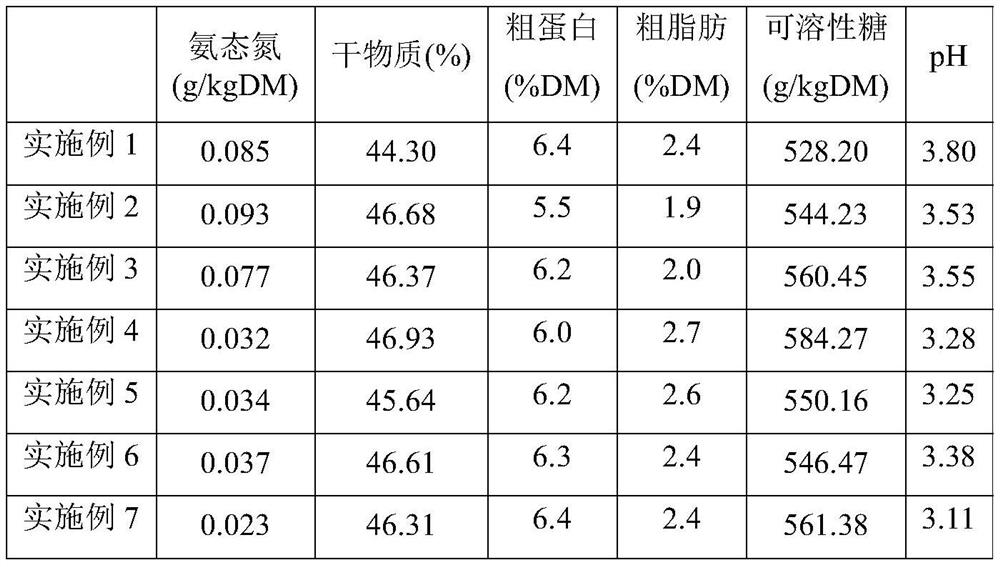Feed for non-ruminant animals and preparation method thereof
A technology for ruminants and feed, applied to the preservation method of animal feed raw materials, animal feed, animal feed, etc.
- Summary
- Abstract
- Description
- Claims
- Application Information
AI Technical Summary
Problems solved by technology
Method used
Image
Examples
Embodiment 1
[0039] A feed for non-ruminants, comprising the following ingredients in parts by weight: 60 parts of cassava, 20 parts of cassava stalks, 7 parts of pigeon pea stems and leaves, 1 part of Lactococcus lactis powder (10 9 cfu / g), 3 parts of jicama, 2 parts of nightshade stems and leaves, 2 parts of urea and 5 parts of sugar beet meal;
[0040] Among them, the stems and leaves of Solanum nigrum are crushed to a particle size of 3-5 cm, soaked in water at 45°C for 30 minutes, taken out, and drained;
[0041] The stems and leaves of pigeonpea and jicama are crushed to a particle size of 3-5 cm, then soaked in 50% ethanol aqueous solution at 65°C for 30 minutes, and the ethanol and water are removed under reduced pressure; wherein, the ethanol aqueous solution contains 5% sodium formate by mass.
[0042] The preparation method of the feed for non-ruminants comprises the following steps:
[0043] S1. Raw material crushing: crush cassava and cassava stalks to a particle size of 3-5 ...
Embodiment 2
[0047] A feed for non-ruminant animals, comprising the following ingredients in parts by weight: 30 parts of cassava, 30 parts of cassava stalks, 17 parts of pigeon pea stems and leaves, 2 parts of bacteria powder, 5 parts of jicama, 5 parts of black nightshade stems and leaves, 4 parts urea and 7 parts beet meal;
[0048] Other operations are the same as in Example 1.
Embodiment 3
[0050] Solanum solanum stems and leaves are crushed to a particle size of 3-5 cm, soaked in water at 75°C for 10 minutes, taken out, and drained;
[0051] The stems and leaves of pigeonpea and jicama are crushed to a particle size of 3-5 cm, then soaked in 80% ethanol aqueous solution at 80°C for 10 minutes, and the ethanol and water are removed under reduced pressure; wherein, the ethanol aqueous solution contains 10% sodium formate by mass.
[0052] Other formula, operation are identical with embodiment 2.
PUM
| Property | Measurement | Unit |
|---|---|---|
| Viable count | aaaaa | aaaaa |
| Particle size | aaaaa | aaaaa |
Abstract
Description
Claims
Application Information
 Login to View More
Login to View More - R&D
- Intellectual Property
- Life Sciences
- Materials
- Tech Scout
- Unparalleled Data Quality
- Higher Quality Content
- 60% Fewer Hallucinations
Browse by: Latest US Patents, China's latest patents, Technical Efficacy Thesaurus, Application Domain, Technology Topic, Popular Technical Reports.
© 2025 PatSnap. All rights reserved.Legal|Privacy policy|Modern Slavery Act Transparency Statement|Sitemap|About US| Contact US: help@patsnap.com



